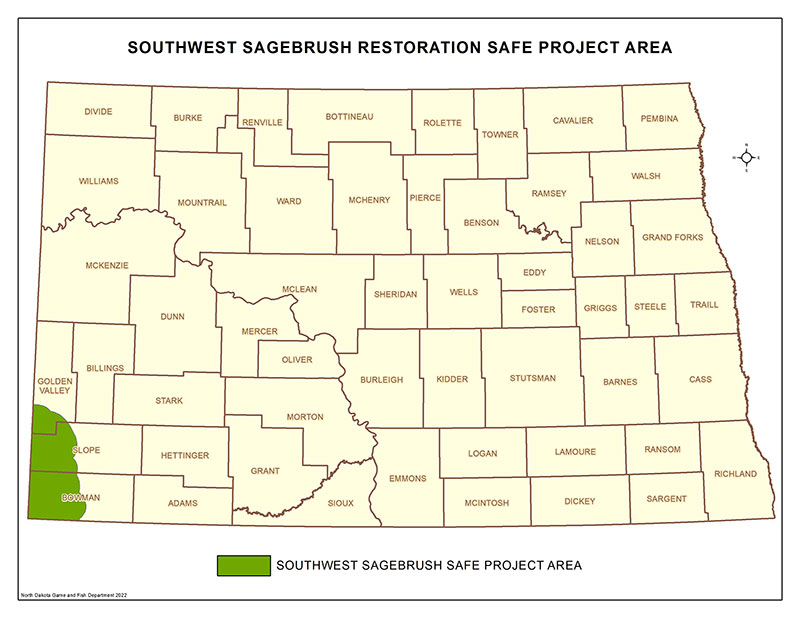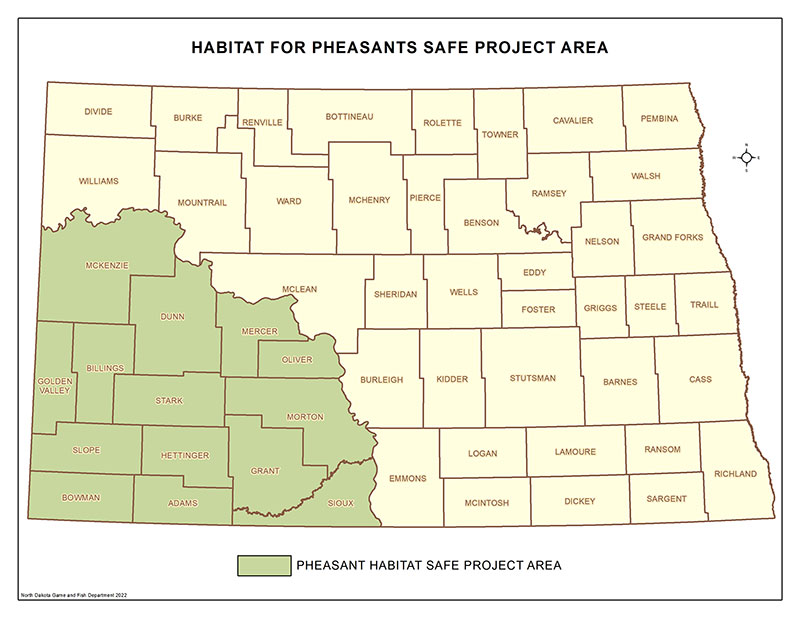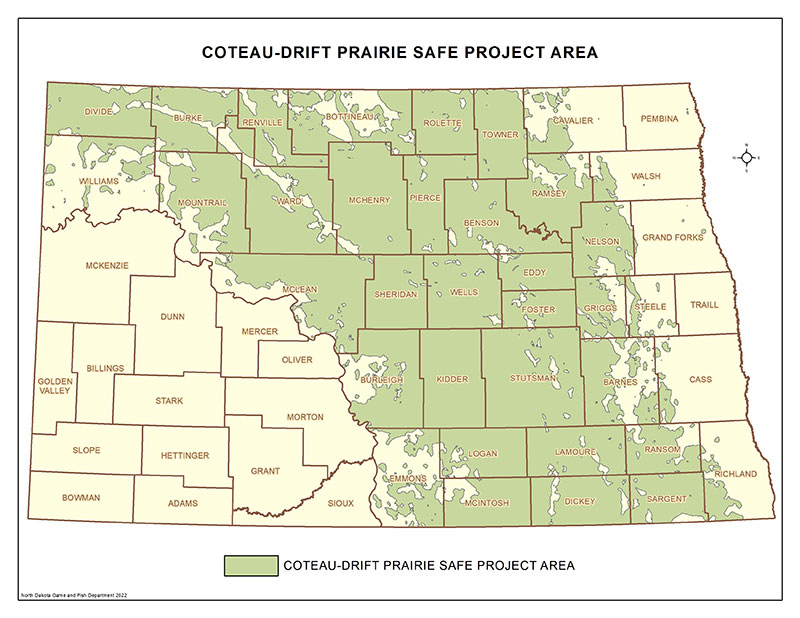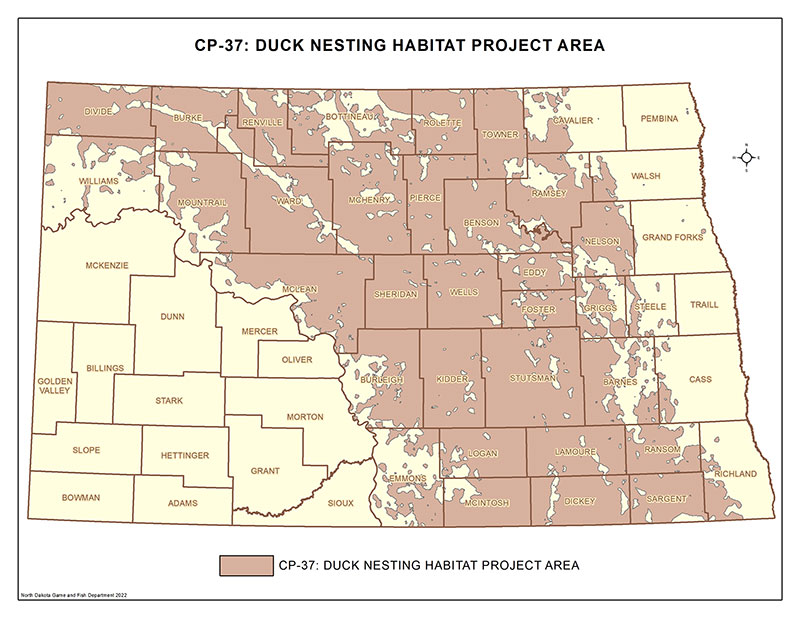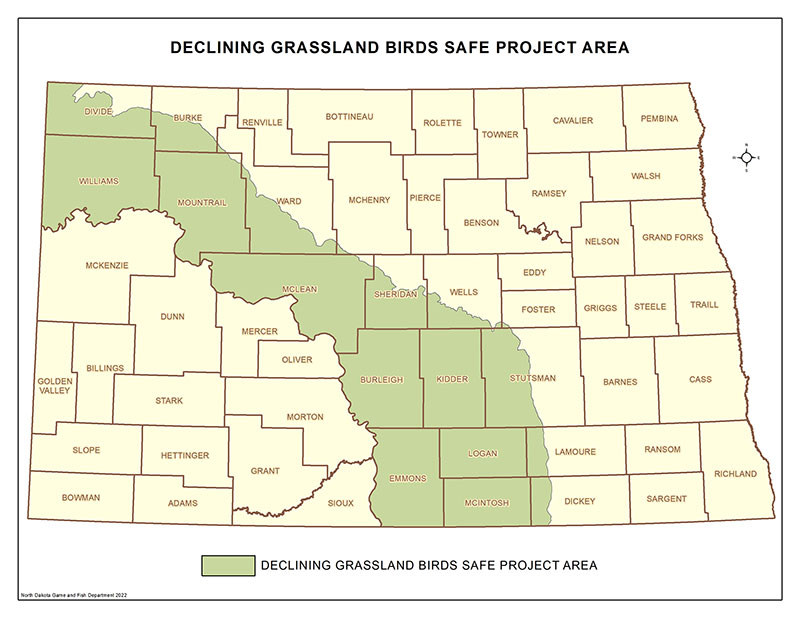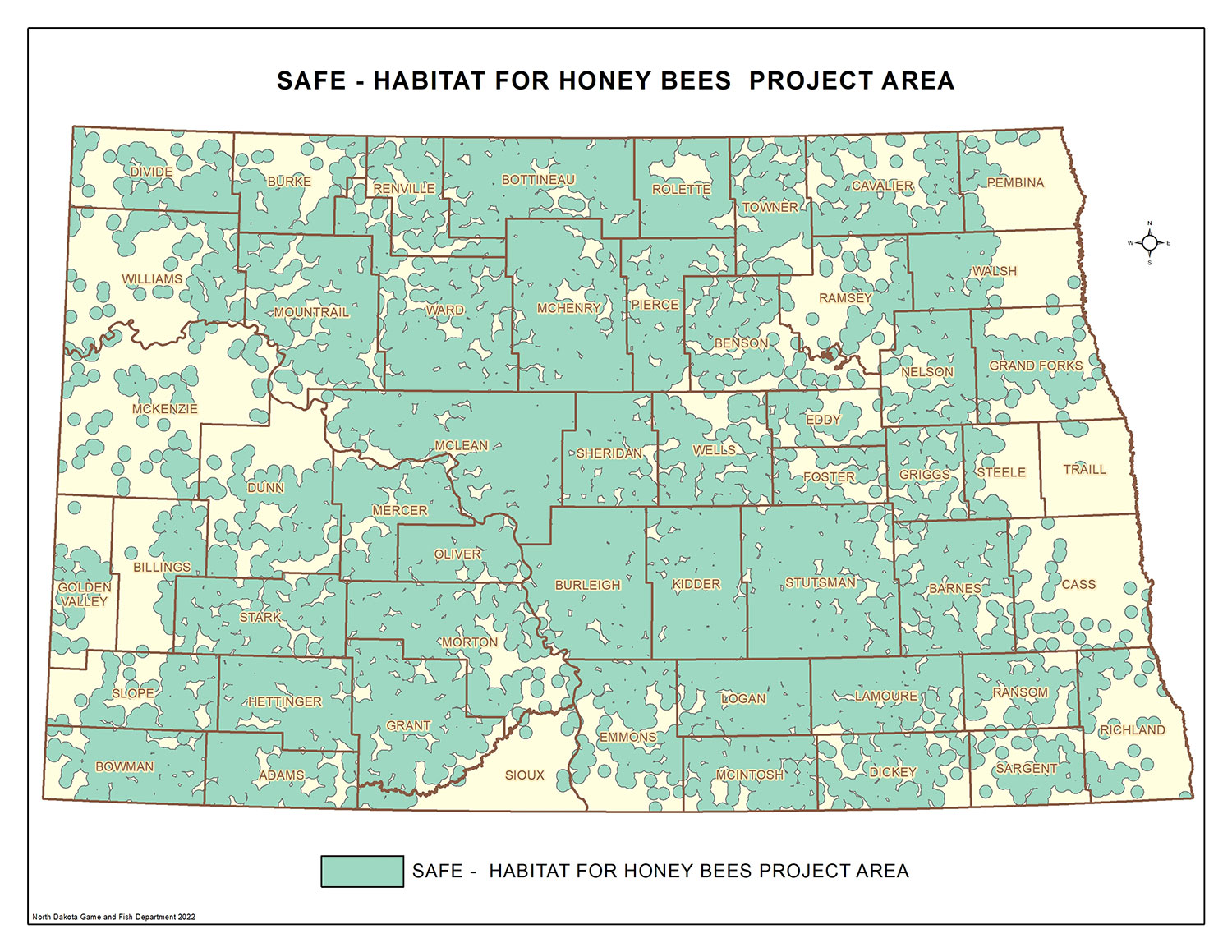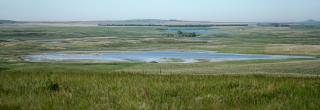
Federal Conservation Programs
The Game and Fish Department's Private Land Open To Sportsmen program can also work in conjunction with federal programs such as the Conservation Reserve Program and Agricultural Conservation Easement Program including Wetland Reserve Easements. Game and Fish offers additional incentives if producers enroll their CRP or WRE into the Department’s Private Land Open To Sportsmen program to allow walk-in access for hunting.
Program Contact Information
To learn more about any of the programs below, contact the USDA Farm Service Agency county offices through the Service Center Locator or contact a North Dakota Game and Fish Private Lands Biologist.
Conservation Reserve Program
CRP is a land conservation program administered by the Farm Service Agency. In exchange for a yearly rental payment, farmers enrolled in the program agree to remove environmentally sensitive land from agricultural production and plant species that will improve environmental health and quality.
Contracts for land enrolled in CRP are from 10 to 15 years in length.
The long-term goal of the program is to re-establish valuable land cover to help improve water quality, prevent soil erosion, and reduce loss of wildlife habitat.

CRP SAFE Programs
Enter a land legal description or street address in the map search box to find which FSA CRP SAFE programs are offered in that location.
(Click to View Full Sized Map)
Southwest Sagebrush Restoration SAFE
Goals
The purpose of the project is to restore cropland to native sagebrush grassland habitat suitable for greater sage-grouse.
Benefits
- FSA bases rental rates on the relative productivity of the soils within each county and the average dryland cash rent subject to a statutory 85% proration.
- Cost share of up to 50% of the reimbursable cost of installing the practice is provided by FSA.
- Contracts may be for a period of 10 years.
Habitat for Pheasants SAFE
Goals
Restore 100,000 acres of quality nesting, brood rearing or winter cover for ring-necked pheasants.
Pheasants require 8-14 inches of vertical cover for nesting and mixes including legumes are preferred. Numerous other farmland wildlife species will benefit from grassland habitat restored through SAFE Habitat for Pheasants.
Benefits
- Annual rental payments are calculated using county soil rental rates. General CRP practices are calculated at 85% of the weighted SRR average.
- Cost share is equal to 50% of the eligible cost of establishing the approved practice cover.
- Required management is required for all enrolled practices.
Coteau-Drift Prairie Waterbank SAFE
Goals
To maintain and increase priority species of waterfowl, waterbirds, shorebirds and landbirds, as well as other mammalian, amphibian, and reptilian species identified in the North Dakota Game and Fish Department’s State Wildlife Action Plan.
Benefits
- FSA provides annual rental payments at 90% of the existing rate to eligible CRP continuous participants based on per acre cropland and marginal pastureland rental rates determined by FSA.
- Rental rates are based on the relative productivity of the soils within each county and the average dryland cash rent subject to a statutory 85% proration.
- Continuous CRP practices are eligible for a signup incentive payment of 32.5% of the first full year annual rental payment is paid at contract approval on all newly enrolled Continuous CRP contract acreage.
- Continuous CRP practices are eligible for a practice incentive payment of 5% of the cost to install the practice.
- Cost share of up to 50% of the reimbursable cost of installing the practice is provided by FSA.
- Contracts may be for a 10 to 15-year period.
CP37 Duck Nesting Habitat
Goals
Healthy, sustainable wetlands are critical to duck populations, which in turn play a significant ecological role. Restoring wetlands and buffers to create duck nesting habitat:
- Gives ducks feeding territory and cover for nesting and brooding.
- Restores habitat for other wetland fowl species.
- Improves water quality by intercepting sediment and nutrients.
- Reduces downstream flooding damages.
- Sequesters carbon.
Benefits
- 10–15 years of annual rental payments.
- 50% cost share assistance for establishment costs.
- Under continuous sign-up, a signing incentive payment and a practice incentive payment additional incentives may be available in your state under the Conservation Reserve Enhancement Program.
Declining Grassland Birds SAFE
Goals
Permanent native grasses, forbs and legumes is used to increase and/or maintain availability of prairie habitat for breeding grassland birds with declining trends identified in the North Dakota Game and Fish Department’s Wildlife Action Plan.
Benefits
- FSA bases rental rates on the relative productivity of the soils within each county and the average dryland cash rent subject to a statutory 85% proration.
- Cost share of up to 50% of the reimbursable cost of installing the practice is provided by FSA.
- Contracts may be for a period of 10 years.
Tallgrass Prairie Restoration SAFE
Goals
To restore cropland to native tallgrass prairie habitat to maintain and increase greater prairie chicken populations in the project area. The project area encompasses the habitat and current distribution area of the two remaining greater prairie chicken populations in North Dakota.
Benefits
- FSA provides annual rental payments at 90% of the existing rate to eligible CRP continuous participants based on per acre cropland and marginal pastureland rental rates determined by FSA.
- Rental rates are based on the relative productivity of the soils within each county and the average dryland cash rent subject to a statutory 85% proration.
- Continuous CRP practices are eligible for a signup incentive payment of 32.5% of the first full year annual rental payment is paid at contract approval on all newly enrolled Continuous CRP contract acreage.
- Continuous CRP practices are eligible for a practice incentive payment of 5% of the cost to install the practice.
- Cost share of up to 50% of the reimbursable cost of installing the practice is provided by FSA.
- Contracts may be for a 10 to 15-year period.
Habitat for Honey Bees SAFE
Goals
Increase the amount of safe high quality foraging habitat for honey bees within their effective foraging range. Improve the overall health and wellness of commercial honey bee hives in North Dakota. Create effective, cost-efficient conservation alternatives for producers in the face of low crop prices, high input cost, rising rental rates with limited risk.
Benefits
It is in the economic interest of U.S. agricultural producers and the American public to ensure a healthy, sustainable population of honey bees and native pollinators. Pollinators are essential to the production of an estimated one-third of the human diet and to the reproduction of at least 80 percent of flowering plants. Insect-pollinated agricultural commodities result in significant income for agricultural producers and account for $20 billion in annual U.S. agri-cultural production.
Agricultural Conservation Easement Program
The Agricultural Conservation Easement Program provides financial and technical assistance to help conserve agricultural lands and wetlands and their related benefits. Under the Agricultural Land Easements component, NRCS helps Indian tribes, state and local governments and non-governmental organizations protect working agricultural lands and limit non-agricultural uses of the land.
Under the Wetlands Reserve Easements component, NRCS helps to restore, protect and enhance enrolled wetlands.
Find out more at USDA Natural Resources Conservation Service website. Producers should contact their local county Farm Service Agency or Natural Resources Conservation Services office for information about CRP or WRE.


